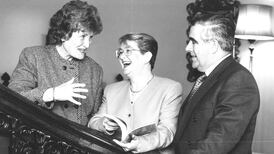Letter from Cordoba: The sun-baked Andalusian plain mirrors the burnt brown landscapes of the Middle East and North Africa, writes Michael Jansen.
Cordoba is a city of broad boulevards and fountains, walled houses with red-tile roofs, an ancient fortress with golden crenellated walls at its heart, an echo of Aleppo and Jerusalem.
Even though the Christian King Ferdinand reconquered Andalusia in the 13th century, and the Inquisition destroyed most Muslim monuments, Cordoba proudly flaunts its Arab heritage. Its greatest treasure is the grand mosque begun in the eighth century by the Western Islamic Caliph Abdel Rahman and completed by successors over the next two centuries.
Built on the ruins of the church of St Vincent, the mosque retains its original red-and-white striped double arches, ranks of Roman, Egyptian and Visigothic columns, and a magnificent mosaic mihrab designating the direction of Mecca for Muslim prayers.
Consecrated as a church when the Christians regained Cordoba, the mosque remained as it was for more than two centuries before construction started on a cathedral within its precincts.
The Christian house of God also took centuries to fashion, incorporating a variety of styles, Gothic, Baroque and neo-Classical.
Although the cathedral is an ungainly, ornate structure within the spare, graceful mosque, if the Catholic Church had not appropriated it the Muslim house of worship would, almost certainly, have been levelled by fanatics seeking to purge Islamic culture from Spain.
Before inaugurating a conference on relations between Islam and the West, Muslim princes, presidents, prime ministers, academics and literary figures from round the world made a pilgrimage to the mosque-cathedral.
Tall Africans in flowing robes and round red velvet caps, Iranian mullahs in twisted turbans, their women enveloped in black chadors, Arab men in caftans and head-dresses, a Mauritanian in starched cotton cloak, and 21st-century men and women in jackets and jeans trailed round the mosque and walked the narrow streets of the old city, visiting the Jewish synagogue and monuments to Cordoba's illustrious sons.
The pilgrims paused at the bronze statue of Maimonides, the 12th-century rabbi who served as physician to the the Arab hero, Saladin, and at memorials to his contemporary, the sage Ibn Rushd (Averroes), and the Arab Andalusian poet, Ibn Zaydun, to whom the conference paid homage.
Arabs, Muslims and Spaniards yearn for the golden centuries of Islamic Andalusia when Cordoba was a flourishing, cosmopolitan city where diverse communities lived side by side in pluralistic peace, neither integrating nor imposing on each other.
As Europe's Cultural Capital in 2016, Cordoba would once again like to become a model for today's European cities with their conflicted minorities. Spain's King Juan Carlos, eager to bridge the gulf between Islam and the West, was the patron of the conference, which was held at Cordoba University by a literary foundation established by a Kuwaiti businessman and poet, Mr Abdel Aziz Saud Babtain.
Princess Elena, the king's elder daughter, opened the event and presented the foundation's biannual poetry prizes. Britain's Prince Charles sent a message of support.
Images of the wars in the Palestinian territories and Iraq lurked in the shadows of the auditorium as speaker after speaker called for interaction and respect. In despair, a Kuwaiti scholar, Dr Muhammad Rumaihi, called this an era of "killing Arabs" and urged the West to listen to Muslims.
Dr Fred Halliday, the Irish born and bred professor of political science at London University, dismissed the myths which sour the relationship between Muslims and the West.
He said that confrontation was recent, not a thousand years old; the European identity was forged by European wars, not conflict with Muslims, as some quarters claim; and Muslims, Christians and Jews have been interacting peacefully for generations.
Therefore, he argued, the West did not need to define Muslims as "the other" or treat Muslims as "the enemy" and a replacement for the Soviet Union.







